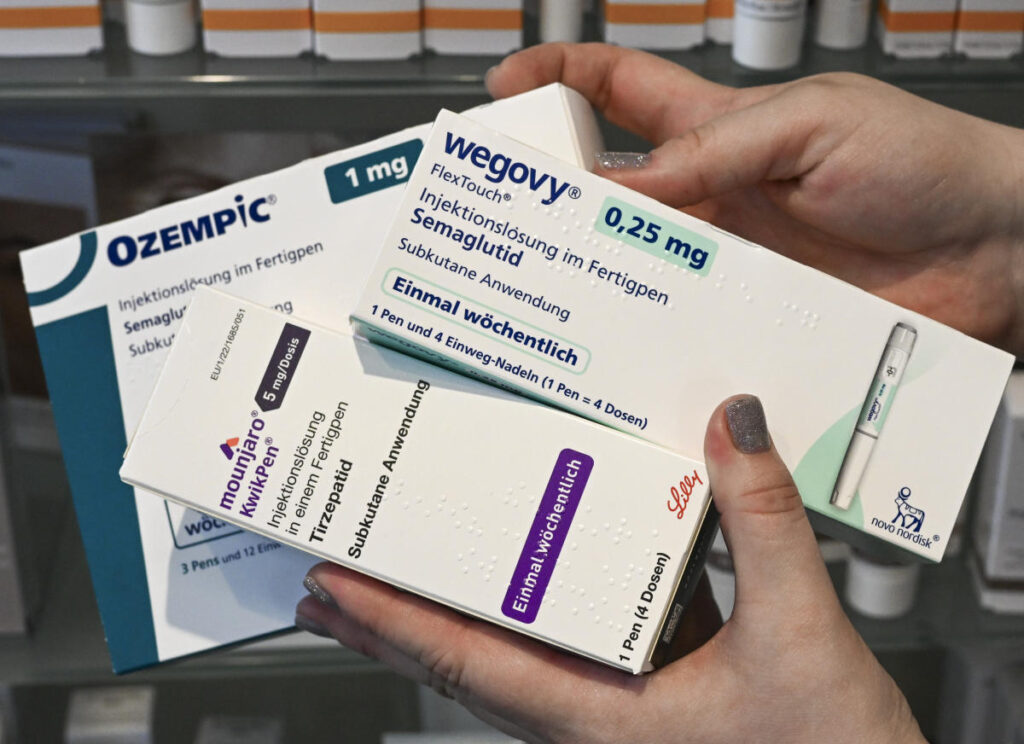The weight-loss market is heating up as a number of companies are looking for a way to upend the dominance of market leaders Novo Nordisk (NVO) and Eli Lilly (LLY) by introducing GLP-1 pills.
New data revealed last week from Roche (RHHBY), Novo, and a smaller biotech prove that an oral option could be as effective as injectables, but Wall Street is waiting to see whether or not patients will prefer a daily pill to a weekly or monthly injectable.
Roche provided early Phase 1 clinical trial data last week that showed its pill provided 6.1% weight loss over four weeks. The sample size of the study was small, just 12 patients, which is typical of early-stage trials.
This is why experts remain vigilant and await later-stage trial data to prove market potential.
Roche’s data is about the same as others already in the oral GLP-1 race, including Pfizer (PFE), Novo, and Lilly. Pfizer recently revealed Phase 2 clinical trial data for its once daily danuglipron showing up to 11.7% weight loss at 32 weeks.
The frontrunner is Lilly’s orforglipron, which showed up to 14.7% weight loss in Phase 2 trials at 36 weeks. It has set the bar for other contenders and gives investors confidence in the current injectable market leader’s ability to capture market share.
“As we consider major innovations in the obesity market, we continue to see much of this coming from LLY and Novo with many newer potential entrants to the space offering limited differentiation from programs already being advanced by the market leaders,” JPMorgan analyst Chris Schott wrote in a note to clients last week.
New data
One key way that companies can differentiate themselves is by providing fewer unpleasant side effects.
Despite the positive news of its weight loss results, Roche’s stock took a hit last week — down 5.4% in the week — after concerns about the pill’s side effects were revealed.
But all GLP-1s, including the current batch of injectables, have side effects like nausea, vomiting, and dizziness. The concern that began when injectables were entering the market is spilling over into trials for pills.
“It is important to keep in mind that in 28-day trials, in order to maximize time on treatment at the full dose level, doses are titrated much more quickly than they would be in real-world use and in longer-term Phase 2 and Phase 3 trials, so we expect tolerability profiles to improve,” said to BMO Capital Markets’ analyst Etzer Darout in a note last week to clients.
But the higher prevalence of negative side effects using lower dosages in Roche’s trial appears to be a reason for greater concern. Especially since it trails other contenders, like Lilly’s orforglipron, which is now in Phase 3.
It’s why JPM’s Schott expressed concerns about Roche.
“We see a limited role for this asset with an efficacy/tolerability profile that is likely to come in below that of orforglipron and a potential market entry in the 2029-2031 timeframe (i.e. 3+ years after orforglipron),” Schott wrote.
Room for competition?
Meanwhile, Novo and a biotech, Terns Pharmaceuticals, also released data last week for their oral GLP-1 candidates.
Novo’s oral candidate looks promising — with data showing it beats the company’s own injectable weight-loss drug Wegovy. Patients showed 13.1% weight loss after 12 weeks on the pill, compared to 6% after 12 weeks in Wegovy’s early trial.
Terns showed its early-stage candidate caused 4.9% weight loss over four weeks, in line with competitors, but the company said it would start the second phase of trials next year. That puts its timeline even further behind other, more well-resourced pharmaceutical companies. Still, its efforts add more choice to what some doctors hope will be a competitive space.
With so many similar products flooding the market and investors heavily favoring current market leaders, the question of what value new entrants add has been raised.
Dr. Michael Weintraub, an endocrinologist and obesity medicine specialist at NYU Langone Health in New York City, says that competition is necessary because all patients are not the same.
He expects that each new drug will prove itself to be more useful in treating other disease related to obesity — such as heart disease, sleep apnea, and liver disease — which is an area the pharmaceutical companies are already exploring with their GLP-1 candidates.
“No single patient responds the same way. Right now, we can’t subdivide these patients into groups yet — and which medication is going to work for our particular patient. So … in that sense, the more options the better,” Weintraub told Yahoo Finance.
Anjalee Khemlani is the senior health reporter at Yahoo Finance, covering all things pharma, insurance, care services, digital health, PBMs, and health policy and politics. That includes GLP-1s, of course. Follow Anjalee on most social media platforms @AnjKhem.
Click here for in-depth analysis of the latest health industry news and events impacting stock prices
Read the full article here

